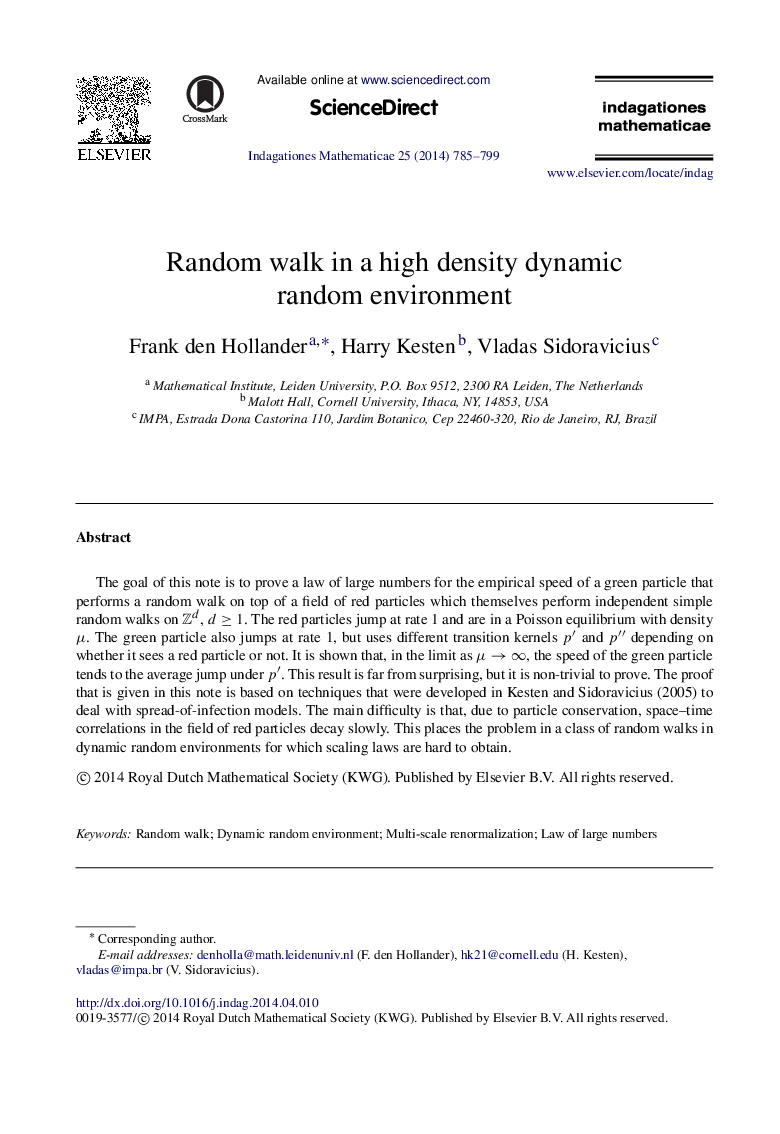| Article ID | Journal | Published Year | Pages | File Type |
|---|---|---|---|---|
| 4672992 | Indagationes Mathematicae | 2014 | 15 Pages |
The goal of this note is to prove a law of large numbers for the empirical speed of a green particle that performs a random walk on top of a field of red particles which themselves perform independent simple random walks on ZdZd, d≥1d≥1. The red particles jump at rate 1 and are in a Poisson equilibrium with density μμ. The green particle also jumps at rate 1, but uses different transition kernels p′p′ and p″p″ depending on whether it sees a red particle or not. It is shown that, in the limit as μ→∞μ→∞, the speed of the green particle tends to the average jump under p′p′. This result is far from surprising, but it is non-trivial to prove. The proof that is given in this note is based on techniques that were developed in Kesten and Sidoravicius (2005) to deal with spread-of-infection models. The main difficulty is that, due to particle conservation, space–time correlations in the field of red particles decay slowly. This places the problem in a class of random walks in dynamic random environments for which scaling laws are hard to obtain.
